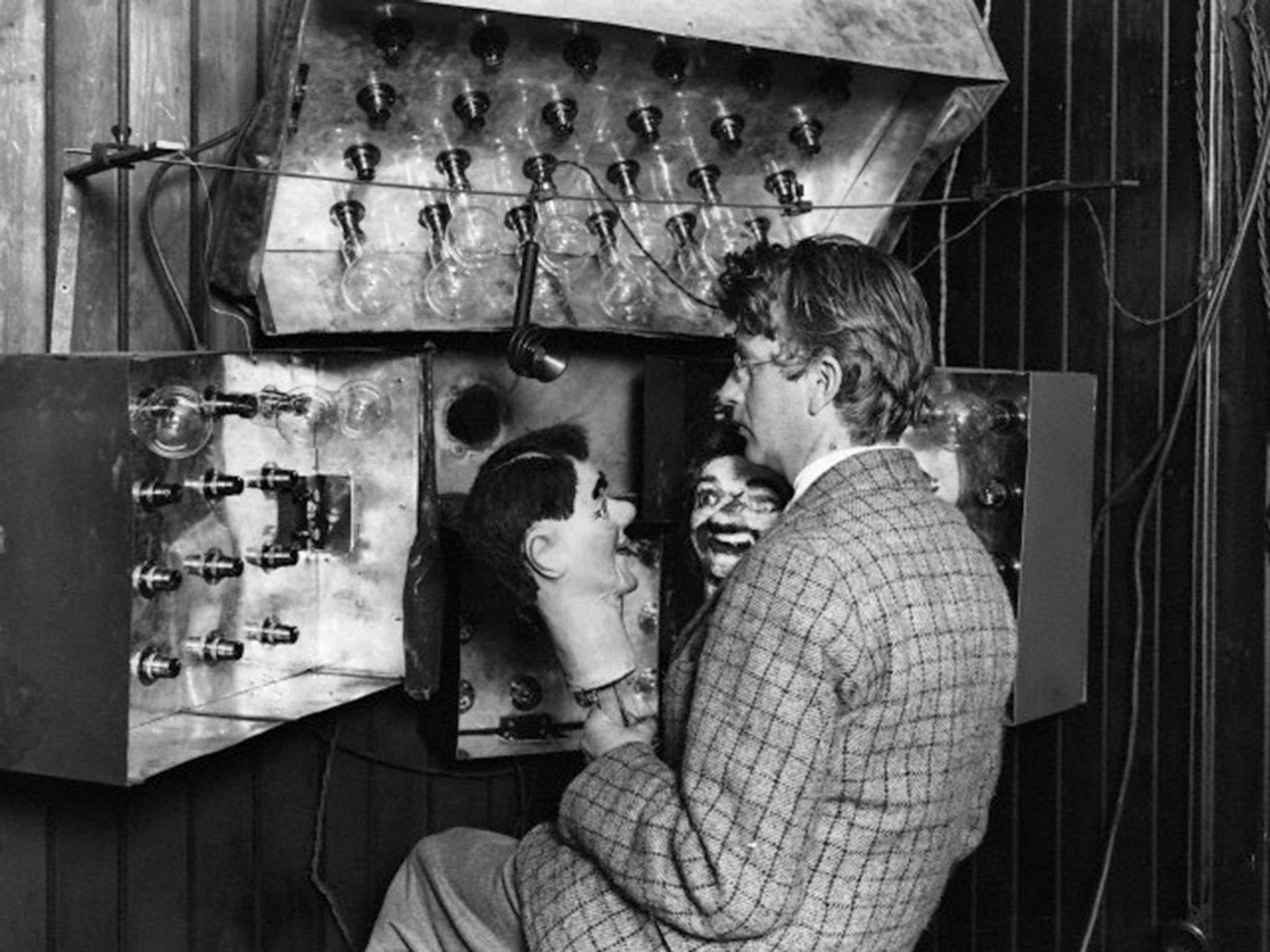Who invented the television? Five facts you need to know about John Logie Baird
His first TV set was made of scissors, an old tea chest and some sealing wax

Your support helps us to tell the story
From reproductive rights to climate change to Big Tech, The Independent is on the ground when the story is developing. Whether it's investigating the financials of Elon Musk's pro-Trump PAC or producing our latest documentary, 'The A Word', which shines a light on the American women fighting for reproductive rights, we know how important it is to parse out the facts from the messaging.
At such a critical moment in US history, we need reporters on the ground. Your donation allows us to keep sending journalists to speak to both sides of the story.
The Independent is trusted by Americans across the entire political spectrum. And unlike many other quality news outlets, we choose not to lock Americans out of our reporting and analysis with paywalls. We believe quality journalism should be available to everyone, paid for by those who can afford it.
Your support makes all the difference.Ninety years since the very first demonstration of television has been celebrated by today's Google Doodle.
However, the device in question was not known as the television in 1926, rather it was the "the televisor" or mechanical television, in which a rotating mechanism generated an image.
Its creator was John Logie Baird, a Scot born in 1888, who wanted to be a soldier in the First World War but whose poor health forced him into long hours in his workshop instead.
Here are five facts you might not know about the man in Google's Doodle, who helped bring you the moving image.
1. He showed early signs of genius
Born on the west coast of Scotland and the son of a clergyman, life was not exactly at the cutting-edge for the young Baird.
But while still a boy he rigged up a telephone exchange to connect his bedroom to his friend's across the street.
And although his later engineering degree was interrupted by the war, he kept experimenting with new ideas.
2. His first 'television' was made of an old tea chest
Baird moved to Hastings on the south coast of England in 1923 due to poor health, yet was determined to realise the dream of transferring a moving image to a screen.
His first television set used an old hat box, a pair of scissors, some darning needles, a few bicycle light lenses, a used tea chest, and sealing wax and glue.
His landlord eventually asked him to move out of his workshop - and he set up shop in Soho in London instead.
3. Not all the newspapers liked him
Baird decided to look for some publicity for his increasingly successful invention and approached the Daily Express - but the editor was terrified of him.
One staff member quoted him as saying: "For God's sake, go down to the reception and get rid of a lunatic who's down there.
"He says he's got a machine for seeing by wireless. Watch him - he may have a razor on him."
4. 'Stooky Bill' made history as the first moving image on a screen
The head of a ventriloquist's dummy called "Stooky Bill" was successfully transmitted to the "televisor" on 2 October, 1925.
The lucky dummy's features were shown at five pictures per second - quickly followed by an office worker named William from downstairs, who unwittingly became the first person to be televised in full tonal range.
Google's Doodle, however, marks Baird's first public demonstration of his televisor to a small audience of scientists, when he used his business partner Daisy Elizabeth Gandy.
5. He lived to see his system beaten by another one
While Baird's system worked through a mechanical scanning device such as a rotating disk or mirror which scanned a scene, other experimenters were going electronic.
In 1935 there was a side-by-side trial of Baird's system and an all-electronic television system - and he lost.
Baird's system was dropped in 1937 and he died nine years later aged 58. He is still seen as one of several inventors responsible for all kinds of programmes being beamed into our homes.
Join our commenting forum
Join thought-provoking conversations, follow other Independent readers and see their replies
Comments